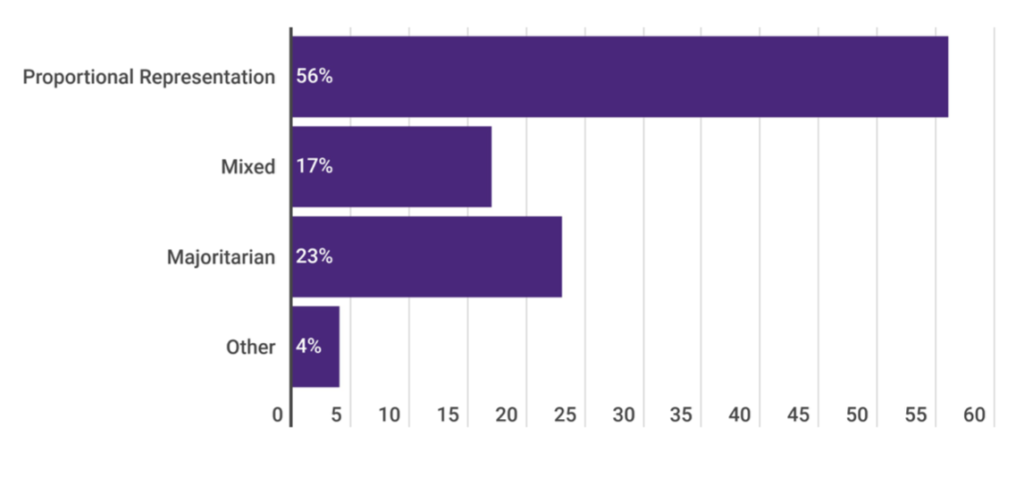Last month’s elections in Switzerland culminated in many historic outcomes, including the highest turnover of seats (58)—with the People’s Party losing 12, the Green Party adding 17 and women seizing 20 more in the House of Representatives.
Prior to the election, the Inter-Parliamentary Union’s global ranking of women’s representation in national parliaments had Switzerland in 38th place, with the percentage of women in the House at 32.5 percent. Although their updated rankings have not yet been released, it seems likely that Switzerland will now rise to the top 20 ranked countries.
Women now make up 42 percent of the Swiss House of Representatives and lead seven of the 26 cantons, including, for the first time ever, Obwalden and Zug. With the exception of the Christian Democrats, in fact, women’s representation increased across the political spectrum: Every party has more women in the House following the 2019 election.
The 2019 election is part of a larger and steady upward trend since 1997 toward gender parity in Switzerland’s House of Representatives. That’s due, likely in large part, to the Swiss systems which promote women’s representation and further steps for achieving perfect parity.
This past July, the research team at RepresentWomen released an updated report on the international state of women’s representation. The report, which compared every country based on the electoral system used to select representatives and if/what type of gender quotas are used, found that countries with proportional representation or mixed electoral systems had higher rates of women’s political representation than majoritarian systems. Of the 77 countries ranking higher than the U.S. for legislative gender parity, 56 percent use proportional representation and 17 percent have mixed electoral systems. This includes Switzerland—which has a mixed electoral system, with proportional representation through the Hagenbach-Bischoff method, in multi-member districts and majority representation in single-member districts.

Gender quotas, both voluntary and legislated, are also “proven mechanisms for change,” the report declares, “as they have successfully accelerated the rate at which women achieve political representation in all regions of the world.” Of the 77 countries outranking the U.S., 61 have some type of gender quota in place; including Switzerland, which has voluntary party gender quotas. Currently only the Social Democratic Party of Switzerland has implemented a gender quota, which calls for women to comprise at least 40 percent of their party electoral lists.
Women’s victories in the October election were certainly impacted by a year focused on gender equality in Switzerland. Half a million women across the country, and even the Swiss parliament, took part in the nationwide women’s strike in June, and women’s representation was a core issue in the 2019 campaign. But the electoral systems which aid women’s candidacy and election cannot be ignored when we talk about successes in gender parity, or which systemic changes may further women’s representation.
To continue along the upward trajectory to gender parity, the Swiss government and parties would benefit from introducing enforced gender quotas and improving candidate recruitment techniques. Similarly, countries falling behind in gender parity, such as the U.S., should look to the successful implementation of fairer voting systems in countries such as Switzerland.





